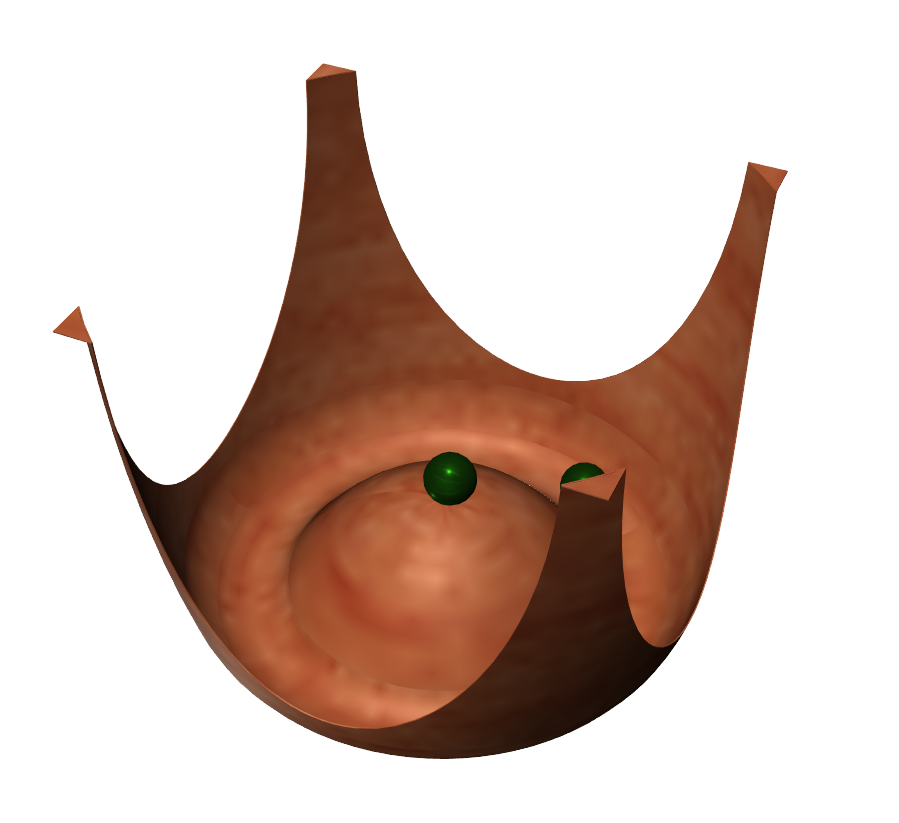Introduction

Earth we live in, the Solar System beyond Earth, and the far-away distant universe beyond the Solar System. The molecules that make up the matter around us, the atoms that make up molecules, and the sub-atomic world that are smaller than atoms. The only difference between a super-giant space and an ultra-micro space is its size. It is essentially just another expression of the behavior of the solid vacuum. We wrote as such in the book "Origin of Gravity & New Cosmos. All cosmological or natural phenomena need a platform called the solid vacuum. What exists in the solid vacuum, or what the vessel called the solid vacuum contains, is energy, and this energy is nothing but the fluctuation of the solid vacuum. When a fluctuation stays in one place, it becomes matter and is quantified by mass. Electromagnetic waves (light) and neutrinos do not stay in one place and are constantly moving. Their rest mass is 0, because they cannot be rest. The identity of neutrinos has not yet been fully elucidated. It is said they have mass, although it is insignificant. However, their mass is not determined definitely.
The outer space that surrounds us is empty, with nothing but stars and light from them. This concept has been recognized as an obvious fact that has dominated our physics since time immemorial. However, it is easy to see that the notion that outer space is an empty one is wrong when we think about the vacuum constant that is widely known to us. The most representative of the vacuum constants is the gravitational constant. In addition, the vacuum has non-zero values of permeability and dielectric constant, which are indices indicating the electromagnetic properties of a material. If there is really nothing between two objects that are apart, then there is no reason for them to be apart. Only the solid vacuum can explain all physical phenomena in the universe.
Although quantum mechanics was born from the recognition that light is both a particle and a wave, the uncertainty and duality have made quantum mechanics a very difficult field of physics. Of course, the influence of quantum mechanics on the development of modern science and technology is very large and clear. I will not specifically mention this here. If the vacuum is a solid medium with the same physical constant as our ordinary materials, the movement of light in the vacuum can be easily understood as a wave. The wave interacts with the solid vacuum, and its energy is quantized. The quantized light energy is expressed in terms of a photon. However, the fact that light is a vibration of the solid vacuum and the movement of the vibration does not change.
When light and neutrinos are tied to the lattice of the solid vacuum and stay in one place, they appear in the form of particles with mass and vibrate there. The form of the vibration is diverse, and particle physics is systematically organized via a standard model. Why are these vibrations of the solid vacuum in various forms and well organized into a model? This is because the vacuum is a solid medium with a certain regularity. From a distance, the detailed structure is invisible, but when viewed through a high-resolution microscope, a well-organized new world appears. To see through a microscope is to collide high energy light, electrons, etc. on something. The higher the collision energy, the finer the structure appears. The structure of the solid vacuum has not yet been studied. However, particle collision tests dealt with in high-energy physics are naturally interpreted as exploring the structure of the solid vacuum. Particle physics interprets the lump of energy resulting from the collision as an independent particle with mass. But the lump of energy tells us on the structure of the solid vacuum in a language that we do not understand well. Almost all of the particles predicted by the standard model of particle physics have been found. Although these particles are high-energy particles from the point of view of particle physics, they are various signals showing the structure of the solid vacuum in terms of lattice fluctuations of the vacuum.
Since the solid vacuum has no energy, we can think that it will form a very rigid and dense structure. Strong starlight from afar propagates strongly and rapidly in specific directions. This is evidence that the vacuum is not composed of a homogeneous medium with no directionality. When a particle has (rest) mass, it is resistant to external forces. It means that something stays in one place. The place where matter stays is called the lattice point of the solid vacuum. This lattice point is regularly constituted in the solid vacuum. To confirm the structure of this solid vacuum, very high-energy particle collisions are required. The lattice of the solid vacuum absorbs momentarily the energy of the collision and releases it. This is the diffraction of the solid vacuum. When the conditions are met, the diffracted waves overlap and become stronger or weaker. Every particle dealt with in particle physics is a kind of vibration, or it is a group of vibrations. From this point of view, we consider and introduce high energy particles shown in particle physics.